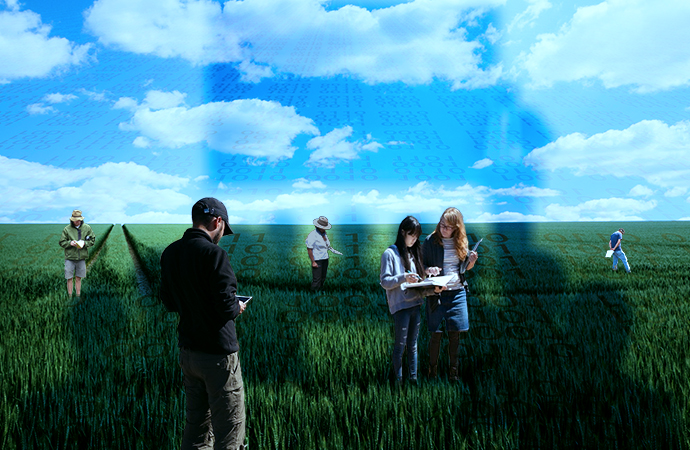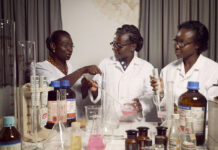Over the years, scientists have involved communities in their research projects. However, citizen science methodologies have become common in the last few decades. In fact, several scientific articles describe these experiences. “With the need for comprehensive data sets that cover wide spatial and temporal scales, citizen scientists have emerged as an advantageous asset to help speed up data collection and diversify datasets for researchers,” indicated a scientific article published in International Journal of Environmental Research and Public Health about the performance of citizen science in schools.
Involving communities in scientific programs is a useful tool not only to researchers but also to society as a way to increase their scientific literacy, aiding in discoveries or just having fun. In addition, these kinds of projects are very suitable for educational purposes.
With the aim to identify success factors in terms of data quality, limitations, and student engagement of these initiatives, researchers from the Netherlands and Spain, led by the Department of Viroscience at Erasmus Medical Center, Rotterdam in The Netherlands, tracked scientific literature about citizen science as a scholar program.
They chose 23 articles published before August 2020 from a dataset of 4200 papers. Most of the projects took place in secondary schools, but the sample also included primary and university levels. The citizen science programs were conducted in the United States and Europe mostly, Australia/ Oceania and South America. The projects usually focus on ecology, environmental sciences, microbiology, and geography.
The articles analyzed showed that data collected by students was generally moderate to high quality, and quality was often higher in projects with explicit protocols. For instance, students in secondary school from the United States gathered high-standard data about established species of benthic rocky intertidal communities that were statistically similar to expert results. In another project, the students collected water source photos to identify water accessibility issues at schools. The authors asserted that 98% of the information compiled by students was usable for scientific objectives.
These kinds of projects had a positive effect on student engagement, too. “Student engagement is a key educational indicator as is a clear reflection of the learning potential of citizen science. Using citizen science in school curriculums enhances knowledge and can complement teachers’ lesson plans,” described researchers from the Department of Viroscience at Erasmus Medical Center.
A project held by the University of Oviedo in Spain, where students worked in Genomics and Genetics with seafood products, illustrated this commitment. “Students were more motivated and evaluated the courses better when working with real samples sourced from their local markets,” the responsible researchers highlighted. Similarly, a Microbiology citizen science project from Hawaii and Colorado stated that “the experience increased their confidence in outside schoolwork, learning microbial techniques, acquiring knowledge on microbes that impact public health and enhanced critical thinking.”
The research also found that sometimes citizen science programs had issues with data misidentification and misinterpretation. They advise using applicable protocols and training as crucial to collect expert-level data. Likewise, they recommended a well-built design research program with clear goals and a direct contribution to science.
Good reasons to get involved
Citizen science is a great way to disseminate science and help people understand the significance of scientific research. “Since many scientific projects are funded by the tax-paying public, people deserve to understand where their money is being invested,” argued the researchers as part of their review. Moreover, these kinds of projects can be a tool against misinformation.
In addition, through these programs, it is possible to get a huge amount of data from diverse times and places to create a dataset otherwise hard to sample with traditional research methods.
To students, being part of interactive research initiatives makes a difference in improving their classroom performance, gaining a better understanding of specific topics, and increasing awareness of issues in their local areas. “Linking the students and the public to the scientific sphere through active community engagement creates a symbiotic relationship to solve community health issues and creates public empowerment,” the scientists from Spain and The Netherlands specified.
Citizen science for infectious disease surveillance
Even though none of the 23 projects studied focus on infectious disease surveillance, researchers argue that citizen science is an opportunity for public health surveillance. “Large social mixing and social interactions between students in schools is a known primary mode of disease transmission, thus, illustrating the great potential in implementing citizen science school projects aimed at infectious disease surveillance in school environments.”
The article claims that Covid-19 has demonstrated the need to apply different strategies in the early detection of infectious diseases. Some scientists have employed citizen science for coronavirus research showing the importance and impact of citizen data collection. For example, a doctoral student at San Diego State University created testing kits for citizen scientists to take environmental coronavirus samples in public spaces. After that, the researchers could model and predict Covid-19 spreads in the environment. Another project from the United Kingdom used data from the “Covid Symptom Study” mobile device application (APP) to discover that loss of smell was a predictor for Covid-positive tests and to determine Covid-19 hotspots. “Incorporating these types of citizen science platforms in school curriculums could be an initiative to promote indirect infectious disease surveillance and raise awareness among scholars,” the paper suggested.
Researchers concluded that student-collected data, government-led disease surveillance, and other health databases could help prevent future epidemics by translating public engagement into public health.
References
Abourashed, A.; Doornekamp, L.; Escartin, S.; Koenraadt, C.J.M.; Schrama, M.; Wagener, M.; Bartumeus, F.; van Gorp, E.C.M. The Potential Role of School Citizen Science Programs in Infectious Disease Surveillance: A Critical Review. Int. J. Environ. Res. Public Health 2021, 18, 7019. DOI: https:// doi.org/10.3390/ijerph18137019
https://www.wur.nl/nl/Publicatie-details.htm?publicationId=publication-way-353834353239
(Accessed 16 December 2021)
Illustration by Dana Dumea.





